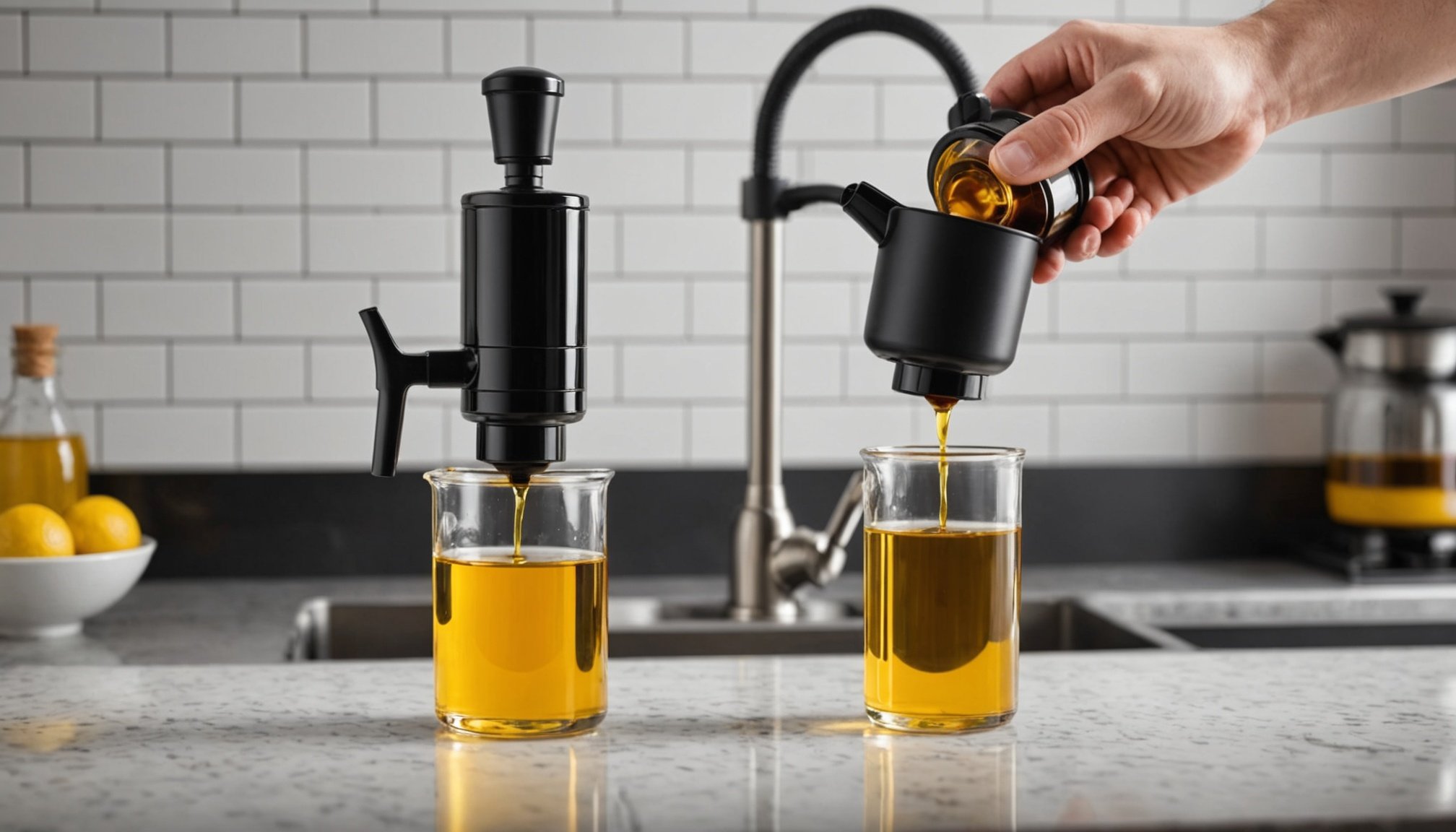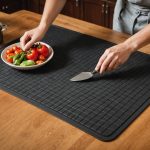Features to Consider When Choosing an Oil Dispenser
Choosing an oil dispenser involves carefully evaluating several key aspects to ensure both functionality and ease of use. A crucial feature is the oil spout design, which dictates how well you can control the pour. A design that allows for smooth and controlled pouring is essential to prevent spills and wastage, enhancing cooking precision.
Material selection is also significant. Glass is a popular choice for its clarity and ability to display oil levels easily, although it requires careful handling due to its fragility. Conversely, plastic offer durability but might not preserve the flavors as effectively. Stainless steel provides a robust and stylish option, known for its durability and resistance to corrosion, ensuring longevity.
Also to read : The Perfect Frying Pan Design for Flawless Crepe Flipping: A Guide
When considering the size, it’s important to distinguish between household and commercial needs. For domestic use, compact oil dispensers are ideal as they occupy less space and suit everyday cooking requirements. In contrast, larger capacities are preferred in commercial settings, reducing the frequency of refills required during high-volume cooking tasks. By addressing these factors—spout design, material, and size—users can make an informed choice tailored to their specific needs.
User Experiences and Common Challenges
Oil dispensers are a staple in modern kitchens, but they are not without common issues. One recurring problem found in user reviews is leakage, which can occur due to poorly designed spouts or malfunctioning seals. Another frequent complaint involves clogging, often resulting from thick oils or inadequate cleaning practices.
Also to see : Choosing the Perfect Fire Extinguisher for Your Kitchen: A Guide to Fire Safety Essentials
To address these challenges and enhance your oil dispenser performance, consider the following tips:
- Ensure proper sealing by inspecting connection points and replacing worn gaskets.
- Opt for dispensers featuring a well-designed spout to minimise leakage. Smooth, controlled pouring can be achieved with models that have a narrower spout.
Real-life user experiences also highlight the importance of choosing materials that suit your specific needs. Frequent feedback suggests that while glass provides visibility, it’s also prone to breakage. Alternately, choosing durable stainless steel reduces the risk of breakage and preserves oil quality.
In conclusion, by thoroughly evaluating user reviews and understanding common issues, one can select an oil dispenser that not only meets functional expectations but improves overall kitchen efficiency. With mindful usage and maintenance, these tools prove to be both practical and indispensable.
Comparisons of Different Types of Oil Dispensers
Exploring the variety of oil dispensers available can significantly influence your culinary experience. Understanding their types allows you to choose the best fit for your needs.
Traditional vs. Modern Designs
Traditional dispensers often sport classic shapes and a simple pour spout, suitable for those who appreciate minimalism. In contrast, modern designs might include mechanisms like anti-drip spouts, enhancing pouring precision and reducing spills.
Pump Dispensers vs. Gravity Feed
Pump dispensers offer controlled, measured doses of oil, enhancing portion consistency. They’re ideal in settings where exact amounts are crucial, such as in dietary meal preparations. Gravity feed dispensers, however, leverage natural flow for continuous pouring, beneficial for larger cooking tasks or industrial kitchens.
Specialty Dispensers for Olive Oil and Vinegar
These are designed to preserve the flavour and integrity of more delicate oils and vinegars. Often fabricated from materials like dark glass or stainless steel, they limit exposure to light and air, key factors in preventing spoilage.
Selecting the appropriate oil dispenser depends largely on intended use. A deep understanding of each type’s pouring styles and functionality can guide a confident choice, enhancing both user satisfaction and kitchen efficiency.
Maintenance Tips for Longevity
Proper oil dispenser maintenance is crucial to ensure long-lasting performance and safe use. Regular cleaning is essential to prevent build-up, which can cause clogging and affect pouring efficiency. Use warm, soapy water to clean the spout and internal surfaces, ensuring residues are thoroughly removed. A small brush can help reach confined areas.
Safe storage plays a pivotal role in preserving the integrity of the dispenser’s material. Glass and stainless steel should be kept in a cool, dry place to avoid exposure to moisture, which could lead to corrosion or breakage. Meanwhile, storing plastic dispensers away from direct sunlight helps prevent degradation.
Routine inspection is advised to identify wear and tear early. Check for cracks, leaks, or defective seals, as these can lead to oil wastage or contamination. Replace any compromised components promptly to maintain optimal functionality. By adhering to these maintenance tips, you ensure your oil dispenser remains a reliable kitchen tool for years to come.
Recommendations for the Best Oil Dispensers
In the quest to find the best oil dispensers on the market, our product review analysis highlights top picks praised for exceptional performance and design. Several have stood out based on both user reviews and expert opinions.
-
XO Olive Oil Dispenser: Known for its innovative spout design, it ensures controlled pouring, eliminating waste. Users appreciate its stainless steel construction for both durability and aesthetic appeal.
-
OXO Good Grips Precision Pour Dispenser: This model excels with its precise pouring capabilities. Its narrow spout offers a smooth flow, making it highly rated among users who favour accuracy in oil distribution.
-
Cole & Mason Glass Oil Pourer: Praised for its elegant design, this glass dispenser aids in monitoring oil levels effortlessly. While fragile, it remains a popular choice for those prioritising visibility and style in their kitchen tools.
These top picks cater to various preferences and needs, from style and precision to material choice and longevity, ensuring there’s an option to meet every culinary requirement and budget consideration.




